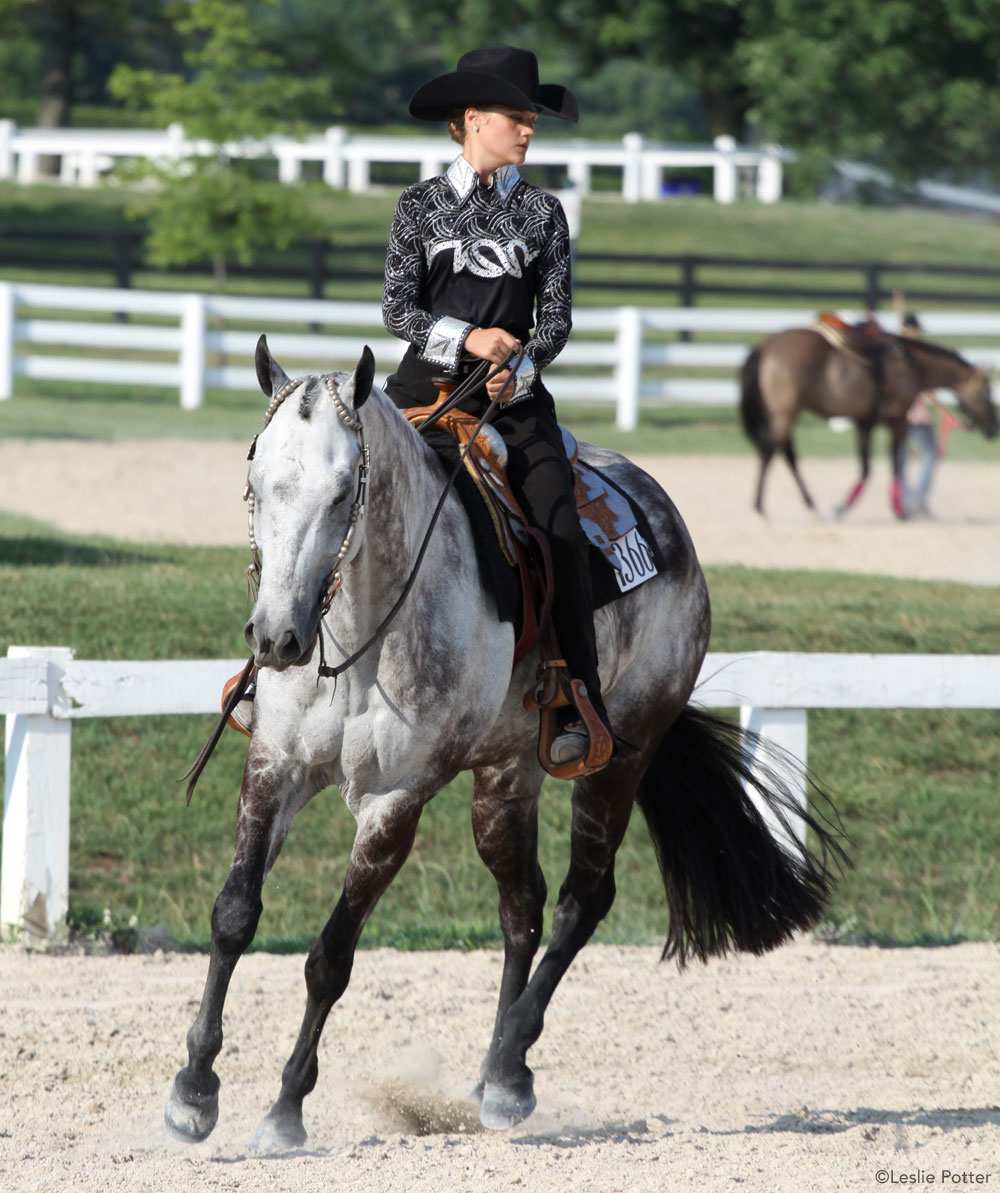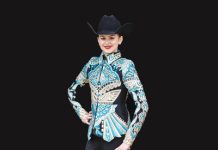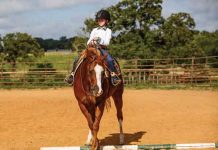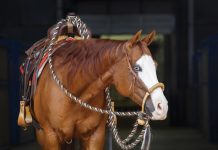Q. I am training my 4-year-old horse for western pleasure. She has the headset and the nice slow speed at the walk and the jog; however, no matter what I do, her head is high and she is really fast at the lope. Is there any advice that you can give me to slow her down a little?

After a warm-up, walk your horse through a series of turns, circles and changes of direction while maintaining a steady pace. This will limber up her body and determine if she’s maintaining proper alignment. Her body should follow the arc of the path she’s traveling on. Her spine should be in line from poll to tail, and she should maintain a forward gait.
A gait that lacks forward motion will have an uneven cadence, and your horse will feel as though she’s drifting off the track. If that happens, hold her head and neck on track with your reins. Take the slack out of both reins so that the contact is even. Make your inside rein short enough to create the right amount of bend for the arc she’s traveling on. Keep your arm muscles loose and your fingers soft while you drive her forward between the “walls” of reins you’ve created. Press with your calves or nudge her forward with your heels.
Keep the training sessions brief. If your horse becomes tired or sore, her gait will deteriorate and she’ll dread the work.
The extended jog and long-trot will build your horse’s loping muscles. Ask her to move forward and evenly between your reins, again while riding turns and circles. Once she’s working well on a bend, ask her to track on a straight line. If she elevates her head or loses energy, move her back into a bend and drive her forward until she relaxes, lowers her head and neck, and carries herself with light or no contact on the reins.
When she’s using herself well at the walk and trot, she’ll be ready to lope. Do most of your loping on circles and turns to keep your horse supple and encourage her to engage her hindquarters. As your horse becomes stronger, you can reintroduce work on straight lines. Keep the training sessions brief. If she becomes tired or sore, her gait will deteriorate and she’ll dread the work. Keep her fresh and interested with a loose-rein walk whenever she gives you a few good strides.







That sounds like good advice to me, but my mare is extremely in shape, she just gets really worked up at the lope. I’m pretty sure we have the trust built and she knows what I want from her, but she always seems to speed up and put that head up as soon as we come out of those little circles. We’ve been working on circles for a long time now (and have introduced other things like one-rein stops) and we still can’t get out of them without immediately speeding up and throwing up that head again. Any advice for us?
GREAT GREAT TIPS!!!!
Learned something new again on Horse Channels.